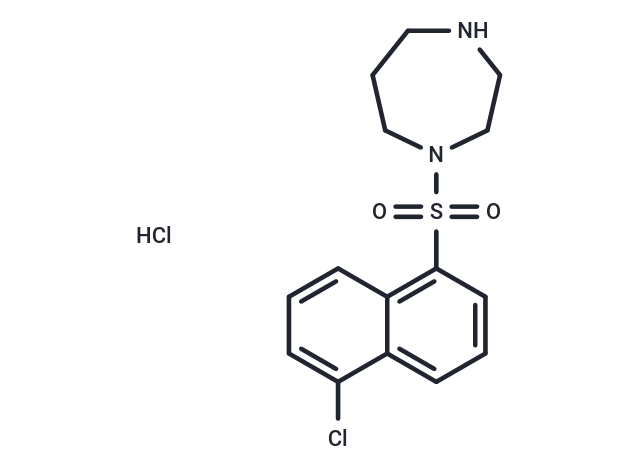Shopping Cart
- Remove All
 Your shopping cart is currently empty
Your shopping cart is currently empty

ML-9 suppresses MLCK, PKA, and PKC activity with Ki values of 4, 32, and 54 μM, respectively. ML-9 is a selective and effective inhibitor of Akt kinase, inhibits myosin light-chain kinase (MLCK), and stromal interaction molecule 1 (STIM1) activity. ML-9 causes autophagy by stimulating autophagosome formation and inhibiting their degradation.

| Pack Size | Price | Availability | Quantity |
|---|---|---|---|
| 5 mg | $34 | In Stock | |
| 10 mg | $52 | In Stock | |
| 25 mg | $97 | In Stock | |
| 50 mg | $158 | In Stock | |
| 100 mg | $235 | In Stock | |
| 1 mL x 10 mM (in DMSO) | $37 | In Stock |
| Description | ML-9 suppresses MLCK, PKA, and PKC activity with Ki values of 4, 32, and 54 μM, respectively. ML-9 is a selective and effective inhibitor of Akt kinase, inhibits myosin light-chain kinase (MLCK), and stromal interaction molecule 1 (STIM1) activity. ML-9 causes autophagy by stimulating autophagosome formation and inhibiting their degradation. |
| In vitro | ML9 (50?μM; 1-4?hours) obviously enhances cleaved caspase-3 levels, reduced STIM1 protein levels by about 42%. ML9 (0-100?μM; 0-24?hours) has no reduction in cardiomyocyte viability, 50-100?μM obviously causes cell death [2]. |
| Molecular Weight | 361.29 |
| Formula | C15H18Cl2N2O2S |
| Cas No. | 105637-50-1 |
| Smiles | Cl.Clc1cccc2c(cccc12)S(=O)(=O)N1CCCNCC1 |
| Relative Density. | no data available |
| Storage | Powder: -20°C for 3 years | In solvent: -80°C for 1 year | Shipping with blue ice. | ||||||||||||||||||||||||||||||
| Solubility Information | DMSO: 25 mg/mL (69.2 mM) | ||||||||||||||||||||||||||||||
Solution Preparation Table | |||||||||||||||||||||||||||||||
DMSO
| |||||||||||||||||||||||||||||||

Copyright © 2015-2024 TargetMol Chemicals Inc. All Rights Reserved.